- News
- Reviews
- Bikes
- Accessories
- Accessories - misc
- Computer mounts
- Bags
- Bar ends
- Bike bags & cases
- Bottle cages
- Bottles
- Cameras
- Car racks
- Child seats
- Computers
- Glasses
- GPS units
- Helmets
- Lights - front
- Lights - rear
- Lights - sets
- Locks
- Mirrors
- Mudguards
- Racks
- Pumps & CO2 inflators
- Puncture kits
- Reflectives
- Smart watches
- Stands and racks
- Trailers
- Clothing
- Components
- Bar tape & grips
- Bottom brackets
- Brake & gear cables
- Brake & STI levers
- Brake pads & spares
- Brakes
- Cassettes & freewheels
- Chains
- Chainsets & chainrings
- Derailleurs - front
- Derailleurs - rear
- Forks
- Gear levers & shifters
- Groupsets
- Handlebars & extensions
- Headsets
- Hubs
- Inner tubes
- Pedals
- Quick releases & skewers
- Saddles
- Seatposts
- Stems
- Wheels
- Tyres
- Health, fitness and nutrition
- Tools and workshop
- Miscellaneous
- Buyers Guides
- Features
- Forum
- Recommends
- Podcast
review
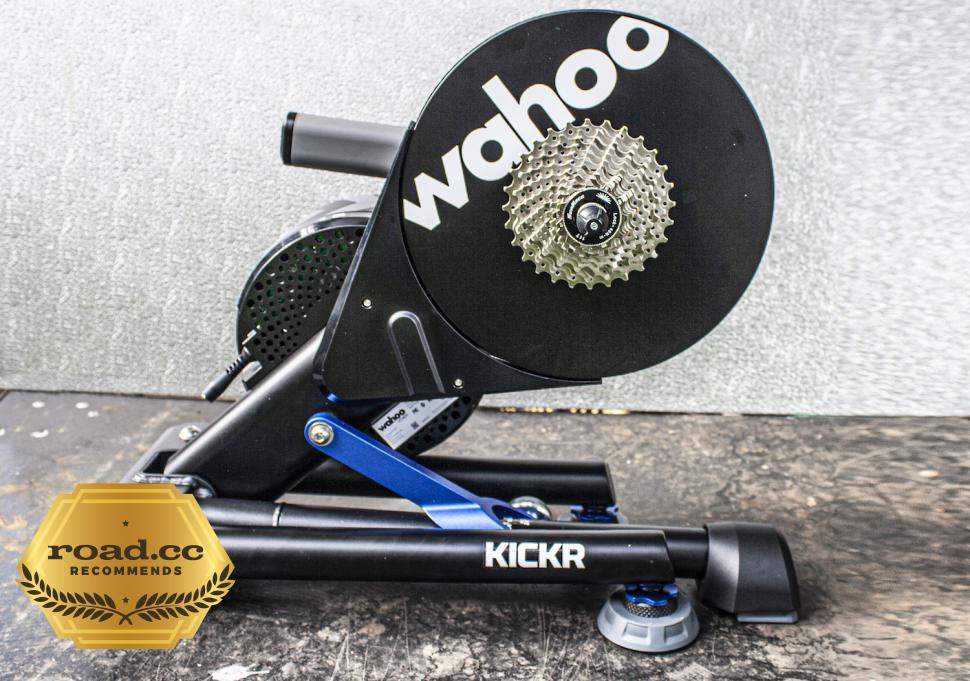 Wahoo Kickr Smart Trainer v6
Wahoo Kickr Smart Trainer v6£1,099.99
VERDICT:
Super-accurate and refined turbo trainer best suited to the elite-level racer
Realistic ride feel
Super-accurate power
Easy to set up
Wi-Fi connectivity
Standard 11-speed cassette
Higher price than before
Kickr Direct Connect is not included
Weight:
21,900g
Contact:

This product has been selected to feature in road.cc recommends. That means it's not just scored well, but we think it stands out as special. Go to road.cc recommends
At road.cc every product is thoroughly tested for as long as it takes to get a proper insight into how well it works. Our reviewers are experienced cyclists that we trust to be objective. While we strive to ensure that opinions expressed are backed up by facts, reviews are by their nature an informed opinion, not a definitive verdict. We don't intentionally try to break anything (except locks) but we do try to look for weak points in any design. The overall score is not just an average of the other scores: it reflects both a product's function and value – with value determined by how a product compares with items of similar spec, quality, and price.
What the road.cc scores meanGood scores are more common than bad, because fortunately good products are more common than bad.
- Exceptional
- Excellent
- Very Good
- Good
- Quite good
- Average
- Not so good
- Poor
- Bad
- Appalling
The Wahoo Kickr Smart Trainer v6 has upped the ante in the best turbo trainers space, boasting two pertinent improvements over its predecessor: a 2.4GHz built-in Wi-Fi connection and a more refined ERG mode, which aim to significantly improve the user experience from both a training and racing perspective. In terms of use, the Kickr v6 is incredibly smooth, accurate and refined, but does this warrant the £100 price hike over the outgoing Kickr v5? I put it through a rigorous 80 hours/3,000km testing regime, which comprised both the Zwift Racing League and interval training, to bring you the definitive verdict.
Looks like a Kickr v5…
Visually, you'll be hard-pressed to tell the Wahoo Kickr v6 apart from its predecessor – they are identical save for the addition of a solitary Wi-Fi LED on the panel that ensconces the flywheel. As a result, it gets the same predominantly black casing complete with blue and grey ancillary colour scheme.
Design-wise it retains the same triple-leg layout, carry handle configuration and adjustable height feature, not to mention the optional Axis feet for a more natural ride feel. Despite retaining the same design language, it's a very refined unit and still manages to cut a contemporary facade amid the bevvy of new turbo trainers on the market.
The balance of the build remains unchanged, too, which is a good thing based purely on the sturdy design of the previous unit's support legs. Like the v5, the Kickr v6 can fold up, with the legs sliding inwards making for a compact unit, but it is on the heavier side and can prove a bit of a chore to move around.
It's been built to last. Like its predecessor, it weighs 22kg (21.9kg on my scale), which helps to keep it firmly planted in place, especially under high-power sprinting. While there is some plastic on show, it all looks high quality and feels solid to the touch – the Kickr v6 is robust and resistant to impacts or knocks.
Technical details and additions
The Wahoo Kickr v6 is simple to set up. It requires very little in the way of adjustments and is pretty much good to go out of the box. It may need some minor tweaks but that's more down to the bike than anything else – for me, that was merely adjusting the flywheel support leg to the 700C position and slotting in a brace of 142mm thru-axle adaptors. Like before, it comes fully assembled, including an 11-speed Sunrace 11-28T cassette (compatible with Shimano and SRAM).
Mechanically, the innards of the Kickr v6 and v5 are identical. That means maximum resistance and gradient simulation are pegged at a respective 2,200 watts and 20%, while power accuracy is rated at a maximum deviation of +/- 1%, placing it alongside the Tacx Neo 2T and Elite Justo in the claimed accuracy stakes.
Wahoo has also retained the flywheel blueprint rather than going the electromechanical route like the Tacx Neo 2T and Kickr bike. This, however, has done little to affect the overall experience as the 7.3kg flywheel – in my opinion – supplies the most natural, realistic ride feel around.
The most notable change to the Wahoo Kickr v6 comes in the form of its Wi-Fi connectivity feature, which is touted as being 65% faster and more stable than Bluetooth or ANT+ protocols. The built-in Wi-Fi also means Kickr firmware updates are now automatic and no longer require manual intervention through the Wahoo app. As a competitive eSports racer, Wi-Fi is a massive improvement in my opinion and, since using the Wahoo Kickr v6, I've experienced zero dropouts during Zwift races – something that has plagued my ANT+ setup in the past, not to mention cost me a good few races where I've missed the split at a decisive moment.
> How to get started with Zwift
The introduction of Wi-Fi, however, is not foolproof and Wahoo still recommends using its Kickr Direct Connect dongle if you race in arenas or environments where signal interference might cause dropouts. Essentially, Direct Connect hardwires the Kickr and local network via an ethernet cable for better stability. Unfortunately, Direct Connect is not included in the package and will cost you an extra £79.99.
Another improvement comes in the form of ERG Easy Ramp, which spells an end to the 'spiral of death', a byproduct of ERG mode that brings you grinding to a halt when trying to overcome the resistance when your cadence drops. ERG Easy Ramp aims to improve things by easing you back into the interval for 10 seconds, should you need to dismount the bike and then return mid-workout, or simply need a break due to fatigue. It's a great feature and will be welcomed by many Zwift and indoor cycling app users.
Another new feature, which is more gimmicky than anything else, is the odometer. This is something I've always thought would be a nice addition and a clever way of keeping track of your smart trainer's mileage. Well, it's been implemented and will automatically track the mileage of the Kickr v6 in the Wahoo app. It's a very handy metric to know if you're looking to buy a secondhand Kickr in the future.
Power accuracy
As a premier division-level racer on Zwift and participant in the 2022 UCI Cycling eSports World Championships, I've always been a proponent of dual recording and ensuring my numbers match up across the board. It's a requirement at the highest level and has become a way of quickly verifying your performance prior to ZADA (Zwift Accuracy and Data Analysis) verification.
I use a Power2Max NGeco power meter as a reference point when it comes to accuracy. This is sometimes further benchmarked by using Favero Assioma Duo power pedals for triple recording purposes and, for the most part, the Power2Max and Assioma Duo pedals track within 1% of each other. For context, I always perform a zero offset on both power meters before every session and the Wahoo Kickr v6 has an automatic spin-down built in and doesn't require any sort of calibration.
In addition, I dual/triple record every race and have a massive bank of recording data to call upon. During the test period, I also did two other tests to further unpack any discrepancies in accuracy levels – using a standard ANT+ connection and then switching to the built-in Wi-Fi connection.
My first ride was a WTRL Team time trial on Zwift using an ANT+ connection and Power2max. While the numbers track within the claimed +/-1% deviation, things look a little off on the shorter-duration efforts between 1 and 5 seconds as seen in the picture above. The sprint number is off by around 6% at the 1-second interval, 4% off at 5 seconds but then comes back to parity over 15 and 30 seconds. But as previously mentioned, my ANT+ setup does suffer from intermittent signal dropouts which might very well be the root of the issue.
Connecting the Wahoo Kickr v6 using Wi-Fi yielded far better results than the regular ANT+ connection and the differences felt more tangible, too – most notably the trainer's response to gradient and speed changes, not to mention the Zwift app's pedal inputs. There's no delay when using the Wi-Fi connection, and everything feels more fluid and immersive. When responding to a move in a race there's no delay, and this means your avatar is able to react quicker than before.
My test using Wi-Fi was benchmarked against the Power2max power meter alone and things look spot on right across the spectrum, including the short-duration sprint intervals.
I triple-recorded a few sessions to test the accuracy a little further. In terms of the longer-duration intervals, the Kickr v6 proved to be the most accurate on 20-minute and 60-minute power. This is reflected across both the Power2max and Favero Assioma Duo pedals with very little in the way of deviation.
Even the sprint interval numbers improved – especially between 1 and 15 seconds, tracking well within 1% across most of the power band. The image above is a snippet of a 15-second interval and Kickr v6 is represented by the purple line, the Assiomas the blue, and Power2max the black. You'll notice that three lines stay fairly close together averaging 420W and peaking at 816W. At 61kg, I'm not the heaviest rider around and don't think of myself as much of a sprinter, so cranking it up to 800W is pretty much my limit, so I can't really comment on how things play out past 1,000W. That said, using Wi-Fi definitely has a bearing on signal stability and ensures dropouts are nullified almost completely.
I didn't focus much on cadence but there was nothing alarming when looking at the recorded figures. While the Wahoo Kickr v5 and v6 rely on clever software and algorithms to calculate cadence – and not an external sensor – the company claims its measurement falls within 1% accuracy of an external sensor. Looking at the picture above, which comprises a 30-minute race and takes in readings well above 100 as well as periods of freewheeling, the results fall within what the company suggests – in this case, an average of 73.5rpm (Kickr v6) versus 73rpm (Power2max), a difference of just 0.68%.
Value and conclusion
Like the Wahoo Kickr v5 it replaces, the Kickr v6 is a refined and amazingly accurate smart turbo trainer. The ride feel is super realistic, the noise levels are unobtrusive and the entire experience feels polished – it's a superb offering. That said, it's not what you'd call cheap, and a question mark naturally hangs over its value.
At £1,099.99, it's not the most expensive top-tier direct-drive turbo trainer – that honour goes to the £1,199.99 Tacx Neo 2T that Dave reviewed. It does, however, cost more than the new Elite Justo and also comes in £100 more than the outgoing Wahoo Kickr v5, which, by all accounts, is just as good save for a couple of add-ons we've already discussed.
Then there is the army of turbo trainers that occupy the second step in the category – units such as the Elite Direto XR, which Dave tested in 2020, Wahoo Kickr Core that Jamie recently tested, and the new Zwift Hub Dave tested this year, each of which represent amazing value and more indoor training app support than you'll ever need.
For the average rider, it's hard to recommend the Wahoo Kickr v6 over the Kickr v5 – the step up isn't big enough to warrant upgrading, especially considering the current cost of living crisis – but make no mistake, the v6 is the Rolls-Royce of turbo trainers. It's one of the most accurate units in the segment and provides peace of mind for the number cruncher and top-flight racers who require the best of the best.
If you want to elevate your Zwift racing experience and ensure your connection is rock-solid and stays uninterrupted, there's nothing quite like the immersive experience offered by the Wahoo Kickr v6 smart trainer. It's the best turbo trainer on the market.
Verdict
Super-accurate and refined turbo trainer best suited to the elite-level racer
road.cc test report
Make and model: Wahoo Kickr Smart Trainer V6
Size tested: One
Tell us what the product is for and who it's aimed at. What do the manufacturers say about it? How does that compare to your own feelings about it?
The Wahoo Kicks v6 direct-drive turbo trainer is aimed at the competitive esports racer who demands accuracy with no dropouts. As a result, the Kickr v6 is all about reliability and Wahoo has gone the distance in ensuring the user experience is refined and faff-free, thanks to a new a 2.4 GHz WiFi connection.
Tell us some more about the technical aspects of the product?
The Wahoo Kickr v6 remains unchanged over its predecessor. This means it retains the same internals as before - 7.3kg flywheel, 2200w of resistance, 20% gradient simulation and +/- 1% accuracy. It weighs 21.9kg.
Wahoo lists these tech specs:
Maximum Power Output: 2200 Watts
Maximum Simulated Grade: 20%
Minimum Simulated Grade: -10%
Product Weight: 47 lb / 22 kg
Drivetrain: Belt Drive
Resistance Type: Electromagnetic
Power Accuracy: +/-1%
Connectivity: ANT+, ANT+ FE-C, WiFi, Bluetooth, Direct Connect
Cassette: Includes 11-speed with 11-28 ratio
Hub Types: 130/135mm QR, 12x142, and 12x148 Thru Axle
Adapters: Includes 130/135mm QR adapter & hub spacer, 12x142/148 adapter & hub spacer, 1.8mm cassette spacer
Maximum Rider Weight: 250 lb / 113 kg
Rate the product for quality of construction:
10/10
Solid and reliable.
Rate the product for performance:
10/10
Smooth, quiet and realistic in terms of feel. Accuracy levels are bang-on claimed.
Rate the product for durability:
10/10
Rate the product for weight (if applicable)
8/10
At 21.9kg, the Wahoo Kicker v6 is heavy but the upshot is a sturdy and solid unit that stays planted during hard efforts and sprinting situations.
Rate the product for comfort (if applicable)
10/10
Rate the product for value:
5/10
Neither the cheapest not the most expensive option among the best turbo trainers. A brilliant unit but hard to justify purchasing over the outgoing, and cheaper, Wahoo Kickr v5.
Tell us what you particularly liked about the product
Wi-Fi worked a treat during racing. No dropouts – if anything the in-game (Zwift) response to gradients and reactions during racing are way faster and vastly more realistic than without.
Tell us what you particularly disliked about the product
Nothing. It's not the cheapest and probably not worth the added premium over the outgoing Kickr v5, but as an elite-level eSports racer, it's a worthy upgrade.
Did you enjoy using the product? Yes
Would you consider buying the product? Yes
Would you recommend the product to a friend? Yes
Use this box to explain your overall score
The only thing holding the Wahoo Kickr v6 back is its price – at £100/$100/€100 more than the outgoing Kickr v5, the price hike will be hard for many to swallow – especially considering the upgrades are not really aimed at the average user. For the money, you'd expect the Kickr Direct Connect dongle as part of the standard package. Other than the price, the Wahoo Kickr v6 is a faultless machine, the segment leader and undisputed king of the best turbo trainers.
About the tester
Age: 40 Height: 175cm Weight: 62kg
I usually ride: My best bike is: Cannondale SuperSlice Disc TT
I've been riding for: Over 10 years I ride: 500km - 15-20 hours per week I would class myself as: Experienced
I regularly do the following types of riding: road, TT, gravel and Zwift
Aaron is the editor of off-road.cc. He completed his BA honours at the University of Cape Town before embarking on a career in journalism. As the former tech editor of Cyclingnews and Bike Perfect, digital editor of Bicycling magazine and associate editor of TopCar, he's travelled the world writing about bikes and anything with wheels for the past 17 years. A competitive racer and Stravaholic, he’s twice ridden the Cape Epic, raced nearly every mountain bike stage race in South Africa and completed the Haute Route Alps. He's also a national-level time triallist and eSports racer, too - having captained South Africa at both the 2022 and 2023 UCI Cycling eSports World Championships.
Latest Comments
- Jaijai 14 min 40 sec ago
His life was only worth shy of 7 years ,that's too lenient in every book .Let alone drugged up and leaving him to die
- webbierwrex 19 min 37 sec ago
I came here to basically write the same thing, the floating bus stop near me has a very narrow cycling lane between a very narrow pavement and a...
- OnYerBike 21 min 16 sec ago
That would give you an average rating of 4.995 stars, but that is a different thing to saying 99.9% of reviews are 5* reviews (199 out of 200...
- VIPcyclist 26 min 35 sec ago
The statement that the police can't do anything about the car being bumped, since it wasn't reported, is probably true. It reminds me of an...
- AS52 42 min 53 sec ago
It wasn't an official consultation meeting - see my comment above.
- GMBasix 1 hour 16 min ago
Right, well that could be handy: I'm going round with my baseball bat to have a quiet chat about ownership. You can use their names to see if they...
- hawkinspeter 1 hour 16 min ago
Yeah, at this point, I can't see much hope for the U.S. people. Trump loves stupid people and it seems like stupid people love him.
- Steve K 1 hour 18 min ago
Years ago, friends and I drove in two cars to a church for a wedding rehearsal. As we drove down the drive, we passed a "CHILDREN - DRIVE SLOWLY"...
- Nagai74 1 hour 26 min ago
I can only speak about my frame.


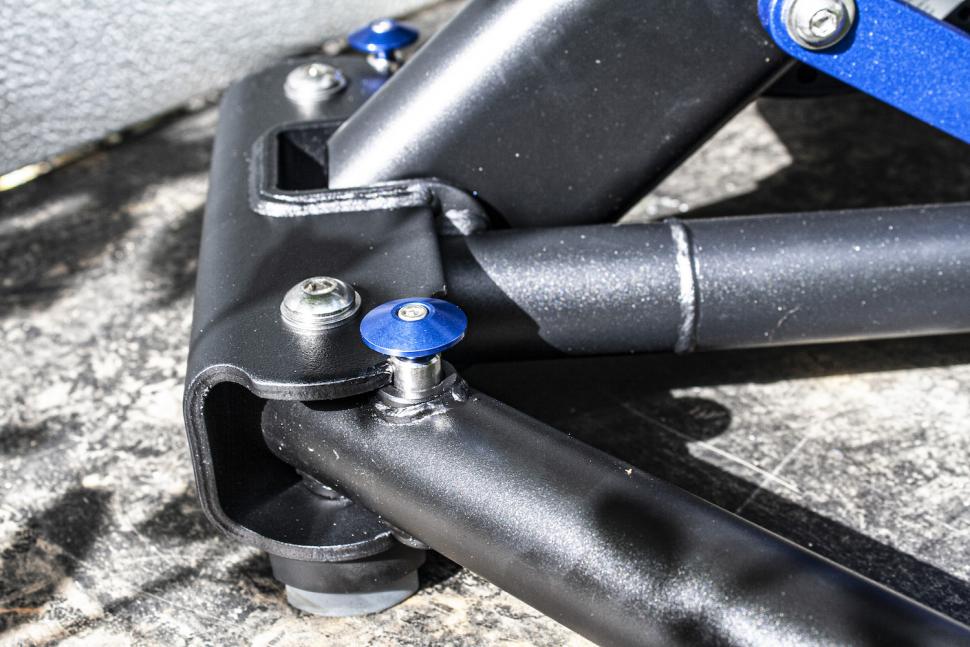











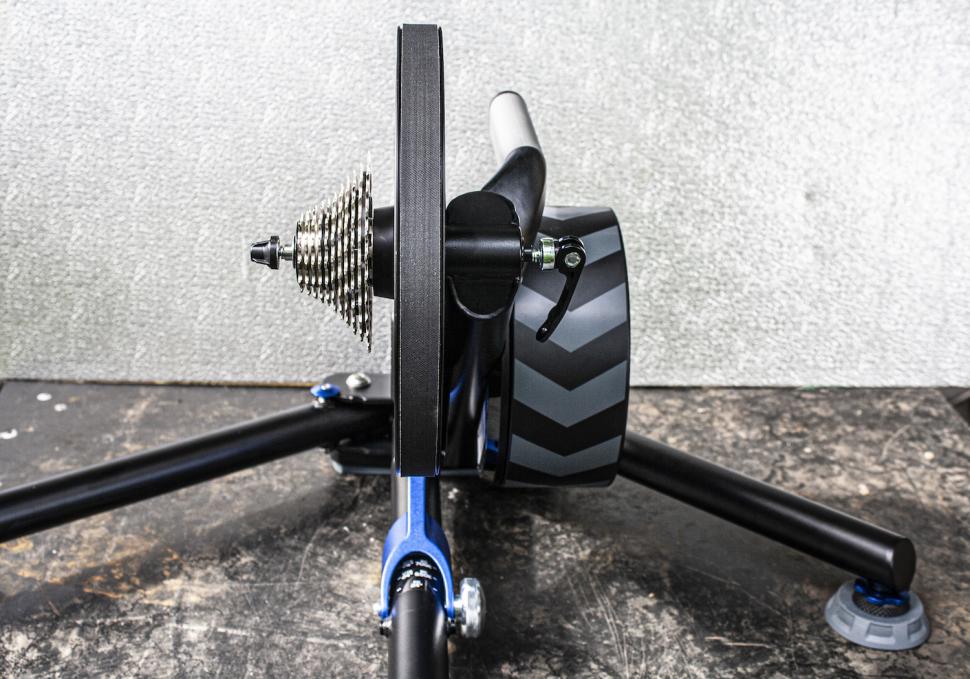

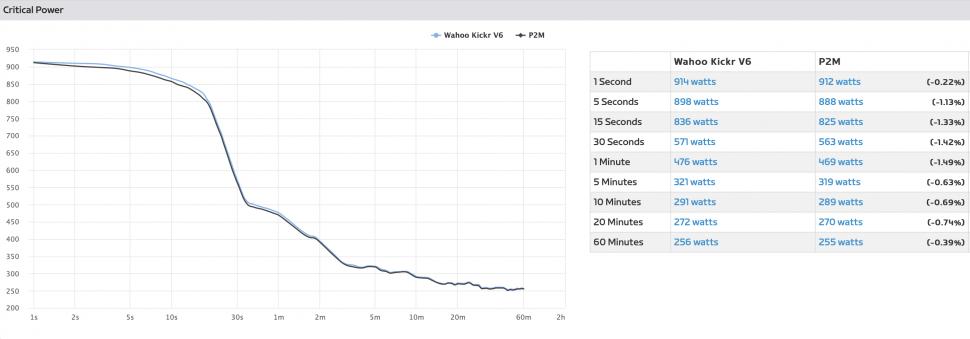



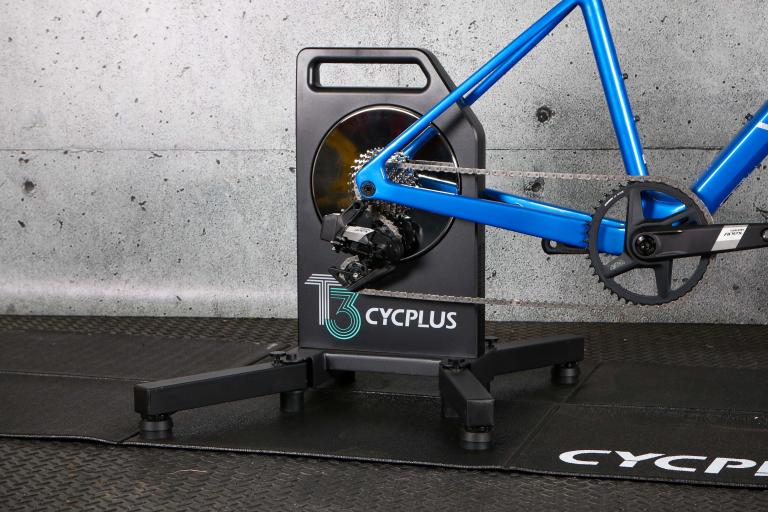
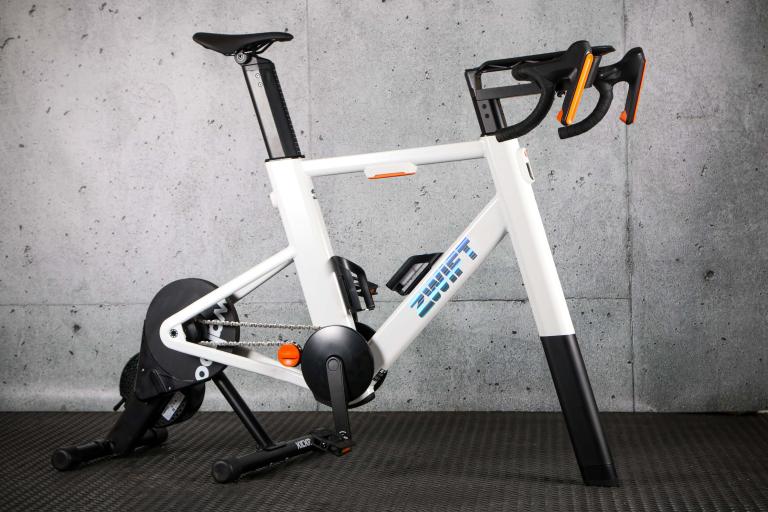

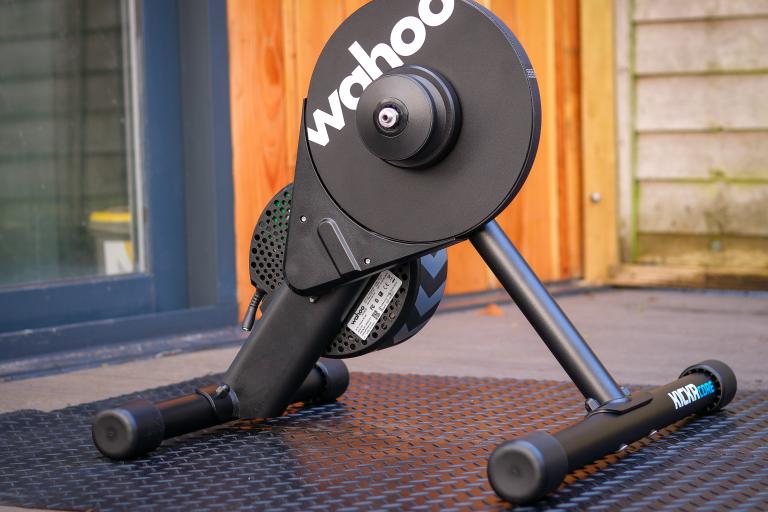
Add new comment
1 comments
Average speed 71.4 km/h? Chapeau!